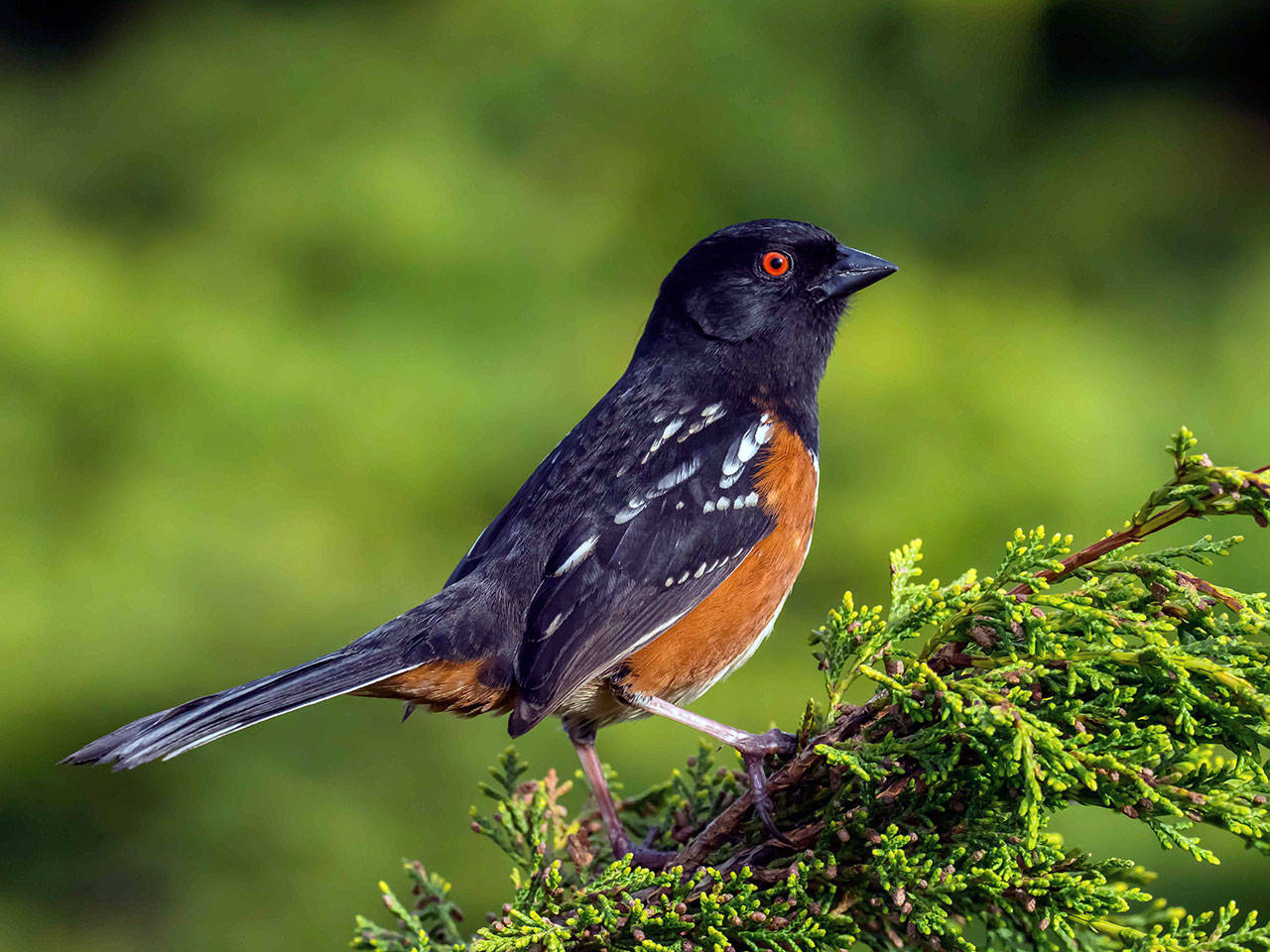By Dianna Moore
Grays Harbor Audubon
There are not too many birds that are so recognizable they almost don’t need an introduction. This is one of those birds, at least from my own point of view. Once seen it is rarely forgotten…it’s that distinctive. And if you like to bird by ear, it also captures that category pretty well too. It is usually the first bird I hear when I walk out my door in the morning, using one of its many varied calls. This photo by Gregg Thompson shows an adult male in all his glory.
General Description: This is a large sparrow with a chunky body, short neck, long rounded tail, and thick seed-eaters bill. The adult male has a black head, orange eyes, chestnut sides and black upper parts spotted with white, while the adult female is more brownish than black. Juvenile birds are heavily streaked. They are smaller than a robin but larger than a song sparrow, with a length of six point seven to eight point three inches, a wing span of 11 inches, and weighing one point two to one point seven ounces.
Habitat: Usually found on the ground scratching for seeds and or insects in shrubby thickets in residential areas, clear-cuts, and around wetlands. They will also take over the areas under feeders.
Behavior: Mainly a ground feeder, this bird prefers a heavy layer of leaf litter and low branches to hide its search for food. It uses a sort of chicken-scratching motion, both feet scratching together forward then back, one of the more reliable sounds to find the bird. In the spring they can also be found foraging in trees. They have several distinctive calls and songs and are not at all shy about singing for appreciative audiences.
Diet: Towhees eat mainly seeds but in the breeding season add insects and other arthropods to their diet and that of their nestlings.
Nesting: Towhees defend their territories by singing and begin the process of choosing both mates and territory as early as February. The female picks the nest site, usually right on the ground, with the rim of the nest at the level of the leaf litter. She builds it of bark, grass, and leaves, and lines it with pine needles, hair or dry grasses. She incubates three to five eggs for 12 to 14 days. Both parents feed the young which leave the nest at nine to 11 days, though they don’t fly for another six days. The parents continue to feed the young in that territory for another 30 days. One brood per season.
Migration: Most western Washington towhees are resident. Most eastern Washington birds migrate to the southwestern and western U.S. Some simply change elevation, dropping into valleys and plains.
Conservation Status: Spotted Towhees used to be fairly rare in western Washington but increased clear-cutting made a lot of new habitat available and their numbers continue to increase.
When and Where to Find on Grays Harbor: Spotted Towhees can be found just about everywhere around the Harbor, especially along the edges of lawns where the bushes and trees meet the grass. The best way to find them is to stand or sit still near those edges and listen for their scratching through the leaf litter. It’s very distinctive. To attract them to your yard, simply lay down a layer of dried leaves and stand back. It’s an irresistible draw to them!


